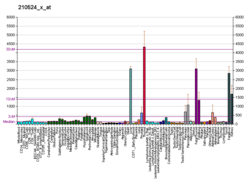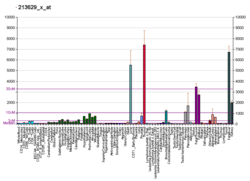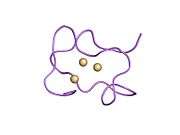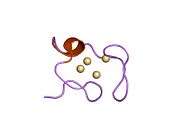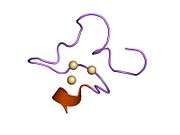Further reading
- West AK, Stallings R, Hildebrand CE, et al. (1991). "Human metallothionein genes: structure of the functional locus at 16q13". Genomics. 8 (3): 513–8. doi:10.1016/0888-7543(90)90038-V. PMID 2286373.
- Gedamu L, Varshney U, Jahroudi N, et al. (1987). "Structure and expression of the human metallothionein genes". Experientia Suppl. 52: 361–72. doi:10.1007/978-3-0348-6784-9_34. PMID 2444457.
- Varshney U, Jahroudi N, Foster R, Gedamu L (1987). "Structure, organization, and regulation of human metallothionein IF gene: differential and cell-type-specific expression in response to heavy metals and glucocorticoids". Mol. Cell. Biol. 6 (1): 26–37. PMC 367480. PMID 3023827.
- Foster R, Jahroudi N, Varshney U, Gedamu L (1988). "Structure and expression of the human metallothionein-IG gene. Differential promoter activity of two linked metallothionein-I genes in response to heavy metals". J. Biol. Chem. 263 (23): 11528–35. PMID 3403543.
- Carter AD, Felber BK, Walling MJ, et al. (1985). "Duplicated heavy metal control sequences of the mouse metallothionein-I gene". Proc. Natl. Acad. Sci. U.S.A. 81 (23): 7392–6. doi:10.1073/pnas.81.23.7392. PMC 392152. PMID 6095291.
- Bylander JE, Li SL, Sens MA, Sens DA (1995). "Exposure of human proximal tubule cells to cytotoxic levels of CdCl2 induces the additional expression of metallothionein 1A mRNA". Toxicol. Lett. 76 (3): 209–17. doi:10.1016/0378-4274(95)80005-X. PMID 7762008.
- Mididoddi S, McGuirt JP, Sens MA, et al. (1996). "Isoform-specific expression of metallothionein mRNA in the developing and adult human kidney". Toxicol. Lett. 85 (1): 17–27. doi:10.1016/0378-4274(96)03632-6. PMID 8619255.
- Garrett SH, Somji S, Todd JH, et al. (1999). "Differential expression of human metallothionein isoform I mRNA in human proximal tubule cells exposed to metals". Environ. Health Perspect. Environmental Health Perspectives, Vol. 106, No. 12. 106 (12): 825–32. doi:10.2307/3434126. JSTOR 3434126. PMC 1533231. PMID 9831543.
- Vandeghinste N, Proost P, De Ley M (2000). "Metallothionein isoform gene expression in zinc-treated human peripheral blood lymphocytes". Cell. Mol. Biol. (Noisy-le-grand). 46 (2): 419–33. PMID 10774930.
- Rahman MT, De Ley M (2001). "Metallothionein isogene transcription in red blood cell precursors from human cord blood". Eur. J. Biochem. 268 (3): 849–56. doi:10.1046/j.1432-1327.2001.01947.x. PMID 11168427.
- Jin R, Bay BH, Chow VT, et al. (2001). "Significance of metallothionein expression in breast myoepithelial cells". Cell Tissue Res. 303 (2): 221–6. doi:10.1007/s004410000310. PMID 11291768.
- Garrett SH, Belcastro M, Sens MA, et al. (2001). "Acute exposure to arsenite induces metallothionein isoform-specific gene expression in human proximal tubule cells". J. Toxicol. Environ. Health Part A. 64 (4): 343–55. doi:10.1080/152873901316981321. PMID 11693492.
- Strausberg RL, Feingold EA, Grouse LH, et al. (2003). "Generation and initial analysis of more than 15,000 full-length human and mouse cDNA sequences". Proc. Natl. Acad. Sci. U.S.A. 99 (26): 16899–903. doi:10.1073/pnas.242603899. PMC 139241. PMID 12477932.
- Izmailova E, Bertley FM, Huang Q, et al. (2003). "HIV-1 Tat reprograms immature dendritic cells to express chemoattractants for activated T cells and macrophages". Nat. Med. 9 (2): 191–7. doi:10.1038/nm822. PMID 12539042.
- Lu DD, Chen YC, Zhang XR, et al. (2005). "The relationship between metallothionein-1F (MT1F) gene and hepatocellular carcinoma". The Yale Journal of Biology and Medicine. 76 (2): 55–62. PMC 2582696. PMID 15369632.
- Gerhard DS, Wagner L, Feingold EA, et al. (2004). "The status, quality, and expansion of the NIH full-length cDNA project: the Mammalian Gene Collection (MGC)". Genome Res. 14 (10B): 2121–7. doi:10.1101/gr.2596504. PMC 528928. PMID 15489334.
- Pope SN, Lee IR (2005). "Yeast two-hybrid identification of prostatic proteins interacting with human sex hormone-binding globulin". J. Steroid Biochem. Mol. Biol. 94 (1–3): 203–8. doi:10.1016/j.jsbmb.2005.01.007. PMID 15862967.
PDB gallery |
|---|
1dfs: SOLUTION STRUCTURE OF THE ALPHA-DOMAIN OF MOUSE METALLOTHIONEIN-1 1mhu: THE THREE-DIMENSIONAL STRUCTURE OF HUMAN [113CD7] METALLOTHIONEIN-2 IN SOLUTION DETERMINED BY NUCLEAR MAGNETIC RESONANCE SPECTROSCOPY 2mhu: THE THREE-DIMENSIONAL STRUCTURE OF HUMAN [113CD7] METALLOTHIONEIN-2 IN SOLUTION DETERMINED BY NUCLEAR MAGNETIC RESONANCE SPECTROSCOPY |



